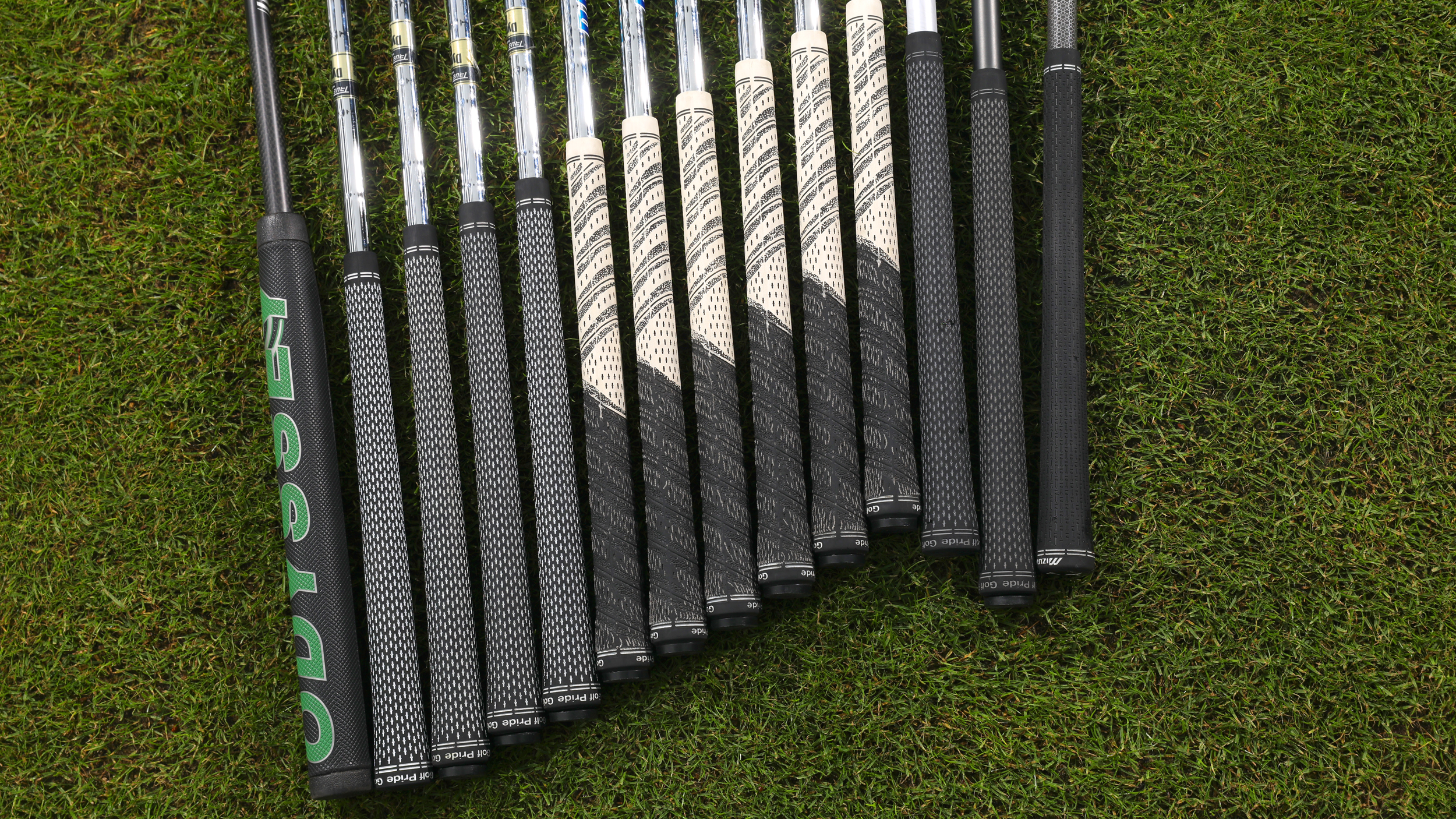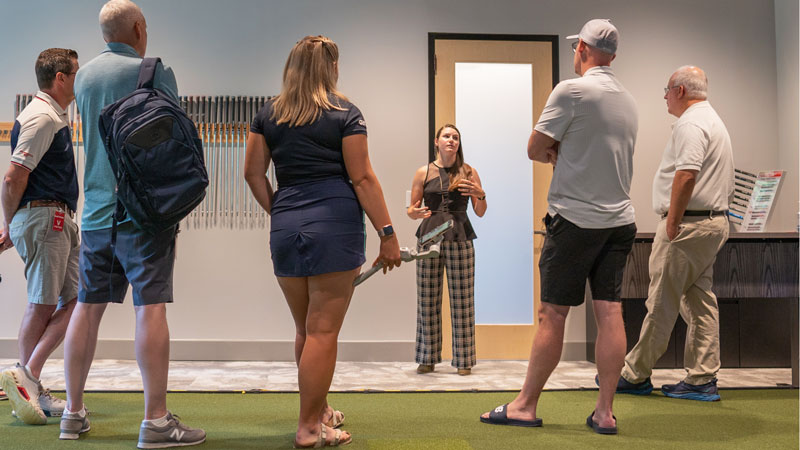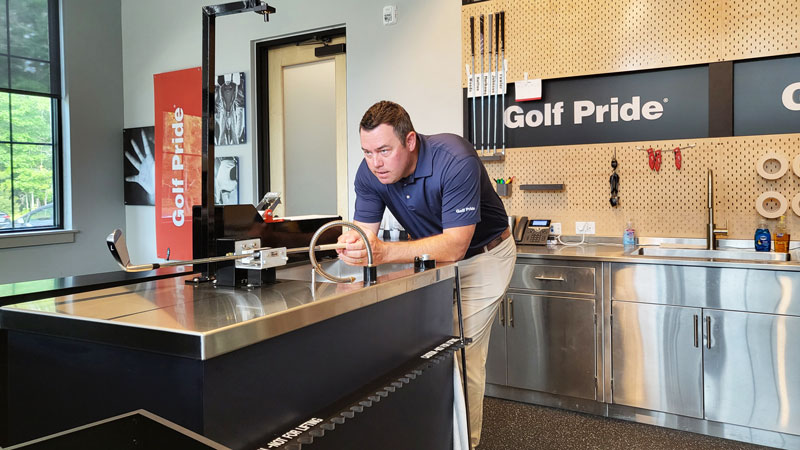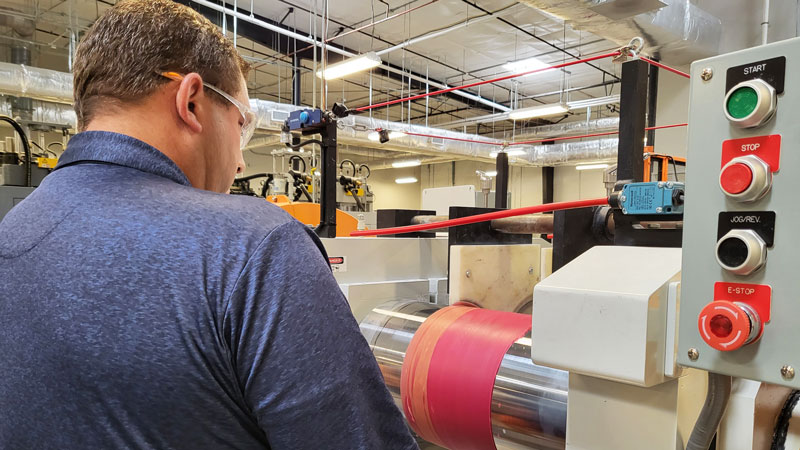Should All Of Your Golf Clubs Have The Same Grip?
The question posed seems simple enough but the answer might come as a surprise, especially for lower-handicappers


Should All Of Your Golf Clubs Have The Same Grip?
Here’s a seemingly simple question: with the exception of the putter grip, should golfers use the same grip on all of their clubs? Conventional wisdom might suggest that doing so would be the best approach in terms of establishing some level of consistency. But there are reasons why in this case conventional wisdom might not be the best way to go.
I recently traveled to Golf Pride’s new headquarters in Pinehurst, North Carolina, where I had the chance to spend some time with Sara Bryant, who is a Development Engineer with the company. In her role, Bryant collects data from grip fittings she conducts on site to help her make determinations about areas in which Golf Pride should devote its research and development resources.
Bryant, who has an academic background in biomechanics, was quick to point out that every golfer is different, but she also believes there's a case to be made for players strategically having different grips on different clubs in their set. And her reasoning makes a lot of sense.

Golf Pride's Sara Bryant discusses her thoughts with a group of media members at Golf Pride's new Pinehurst headquarters.
“I would be like, hey, you should actually have different grips throughout your bag,” said Bryant, who started in her role at Golf Pride in April of 2020 after earning a Master's degree in Mechanical and Materials Engineering from Western University in Canada, where she also played on the women’s golf team as an undergraduate.
Bryant explained that using different grips to enhance performance should be tied to feel. More specifically, firmer grips, such as Golf Pride's Tour Velvet Cord or Z-Grip Cord, give players excellent feedback on all shots but can be demanding on the hands for less seasoned players, while softer grips like the company's CPX or CP2 create less feedback but more comfort and less stress on the hands. Golf Pride's highly popular MCC range, which is used by Tour stars like Rory McIlroy and Jon Rahm, would fall in the middle albeit more toward the firm side.
“On a wedge shot you want actually a little bit of a firmer feel because you want to be able to feel those vibrations. You want to feel that impact,” Bryant added. “Whereas on a driver, there’s a lot of vibrations going on, so you want to actually reduce those impacts.”
Subscribe to the Golf Monthly newsletter to stay up to date with all the latest tour news, equipment news, reviews, head-to-heads and buyer’s guides from our team of experienced experts.
In Bryant’s current role, how pressure and vibration affect the hands during the swing is one of the major areas around which she’s collecting data, an ongoing process that also includes how grip pressure should influence grip fitting. “For my personal research, do those vibrations actually impact your hands?,” she explained. “Is there something we can make that can reduce those forces but still make you feel it? That’s another concept (I’m looking at) as well.”

Golf Pride's new headquarters features a fitting studio that's open to the public, which allows Golf Pride to capture data that helps shape its development plans.
Bryant added that the idea of using different types of grips through a player’s set might best align with ability level as well. Why? From a performance standpoint, it's the better player who is more likely to benefit from something that would equate to a progressive set of grips.
“Your skill level, that’s going to change what you’re gravitating toward,” Bryant said. “For the lower-handicap players, they’re looking at those corded grips where they can really get that good traction but they also might want something softer with a driver when they’re swinging faster. But for a higher-handicap player, they’re just trying to keep consistent and have the same feel.”
Could the end result be that Golf Pride produces, for example, its Tour Velvet Cord, MCC Plus 4 Align, and CPX grips with the option to have the same look? Or what about a matched set of grips that is firm for the wedges but softer for the driver grip and other longer clubs in the bag?
It’s definitely possible and the latter is a concept that has become increasingly popular with golf manufacturers in the development of iron sets and iron shafts. But while from an execution standpoint it sounds fairly simple in theory, such a process would require significant R&D efforts, especially when it comes to the use of color.

The use of different colors in manufacturing grips is far more complicated than one might guess, especially when it comes to consistency.
During a tour of Golf Pride’s new 36,000 square foot headquarters, Golf Pride president Jamie Ledford advised that using different colors in creating grips creates challenges in terms of precisely matching texture and feel. The idea of doing the same across different grip categories would be a significant task, but that could be where we’re headed.
“We know people like a cohesive look; they like seeing a similar pattern. I think that would be beneficial,” Bryant said about the idea of creating similar aesthetics across different product lines. “There’s higher pressure (with a driver) and a lower pressure with a wedge. Let’s give you that different feel so it’s complementing what you’re doing.”
Golf Pride has all of the materials, tools, and machinery it needs in its Pinehurst facility to create prototypes for testing before choosing to advance products overseas for mass production, which is a significant advantage when it comes to its development efforts.
Based on Golf Pride's capabilities and Bryant's ongoing research, it's likely that significant changes in the grip market are on the way. But the key takeaway now is to not be afraid to experiment with the grips you choose for your different clubs in an effort to improve performance and feel.

Chris joined Golf Monthly in February of 2022, becoming the organization’s first full-time staff writer in the United States. In his role at Golf Monthly, Chris reviews a broad spectrum of golf equipment, ranging from the latest in golf clubs to what’s new in the world of golf technology. His vast experience in the game allows him to look beyond the marketing hype to judge the merits of the latest equipment for golfers of all ability levels. As for the trend in golf equipment that Chris has been most impressed with in recent years, the Players Distance Iron category would earn that distinction, as golfers now have far better options for irons that provide the assistance that so many need in terms of distance and forgiveness without forcing them to sacrifice look and feel.
On a personal level, Chris played college golf and was a three-year letterwinner and two-year captain at Lynchburg College in Virginia and later spent two years as the assistant golf coach at the University of Virginia. The vast majority of his professional career, however, has been spent as a sports writer and editor. In the early phases of his career, he covered college football, college basketball, and golf for different newspapers and websites before turning his attention solely to golf in 2011. Over the course of the past decade, Chris managed the Instruction Blog for GolfChannel.com and more recently created equipment-related content for TGW.com and 2ndSwing.com.
An avid player, Chris currently maintains a handicap index of 2.4 and has a career-low round of 66, which he has shot on three occasions. He lives about 20 miles north of Atlanta in Roswell, Georgia, with his wife, Stacey, and is a member at Atlanta National Golf Club.
Chris is currently playing:
Driver: Callaway Epic Sub Zero, 10.5*
Fairway wood: TaylorMade M3, 17*
Hybrid: Callaway Apex UW, 19*
Irons: Mizuno JPX 921 Forged, 4-PW
Gap wedge: Cleveland RTX 4, 50*
Sand wedge: Titleist Vokey SM6, 56M
Lob wedge: Titleist Vokey SM8, 60L
Putter: SeeMore Nashville Z3C
Ball: TaylorMade TP5x